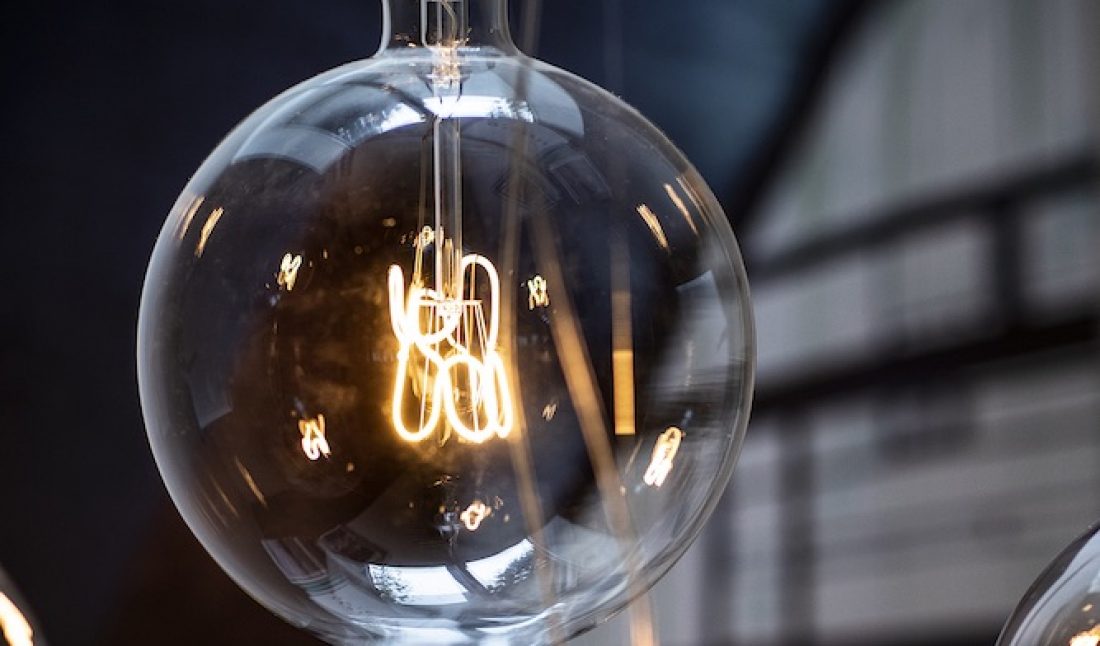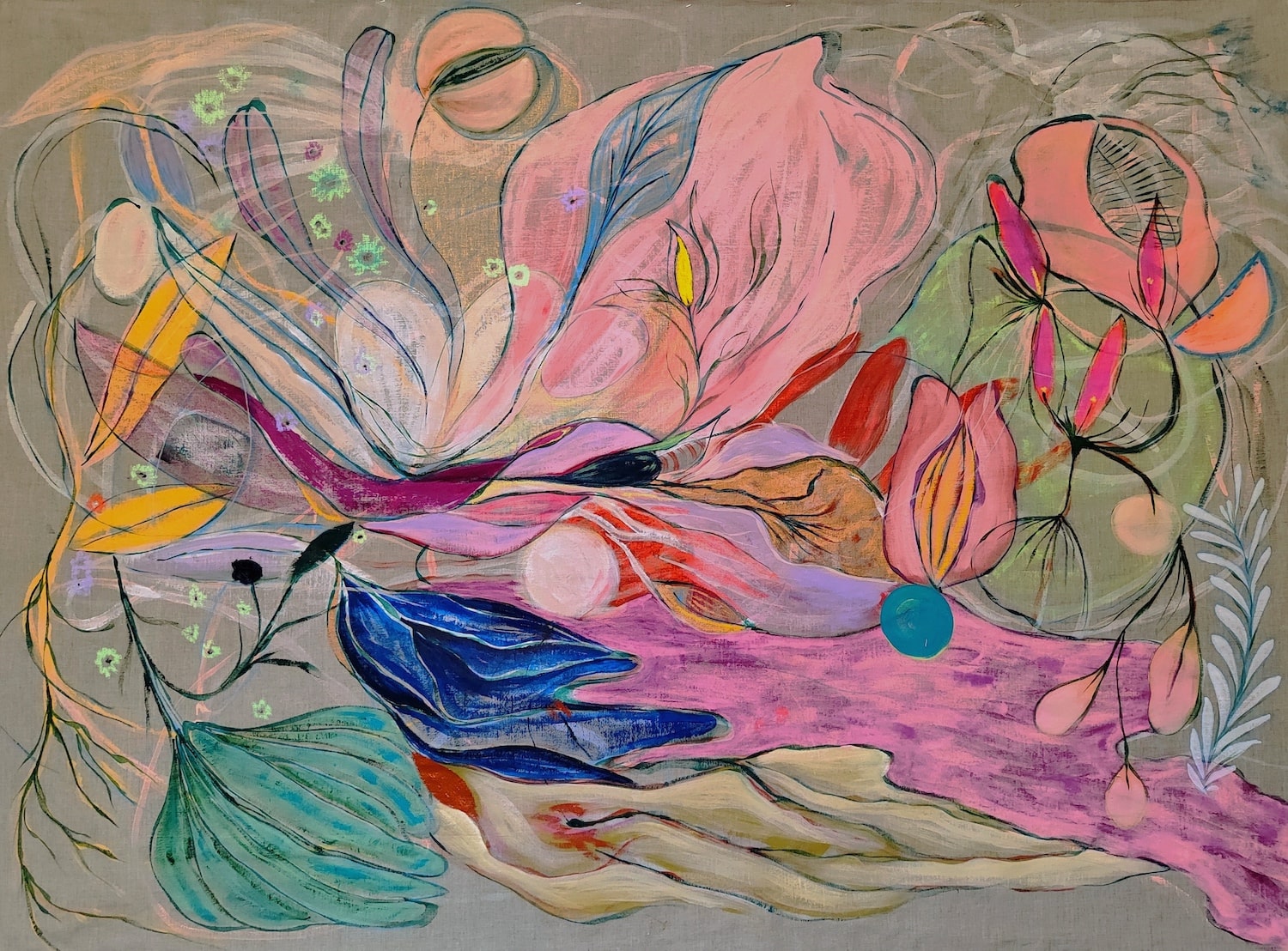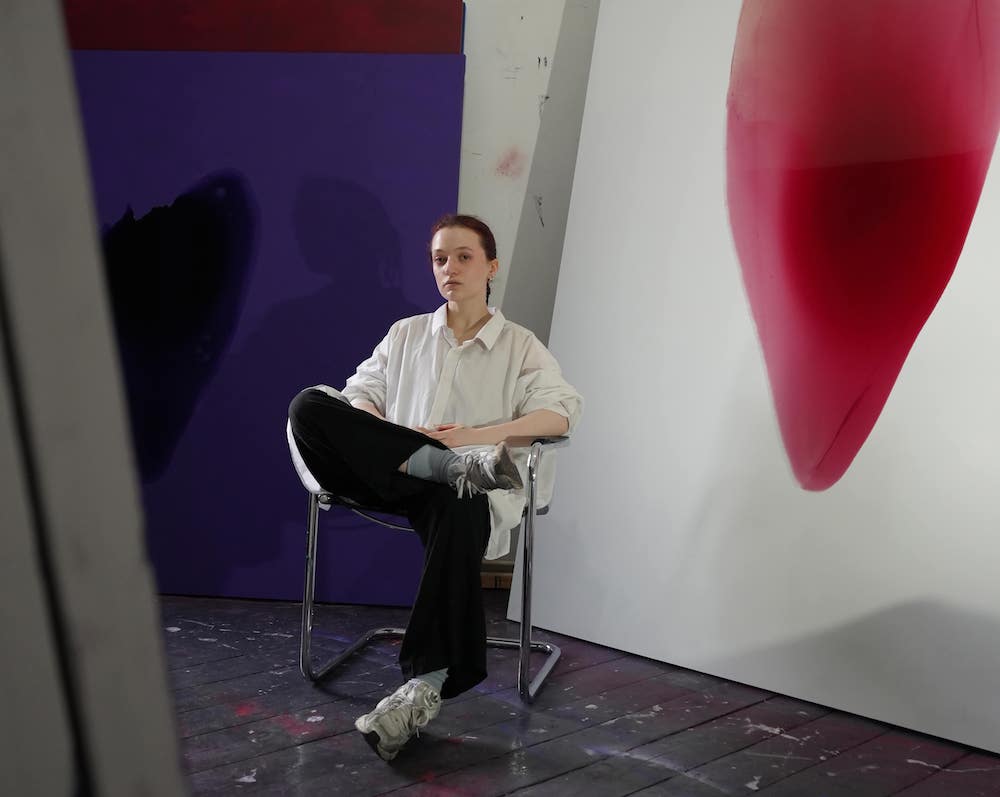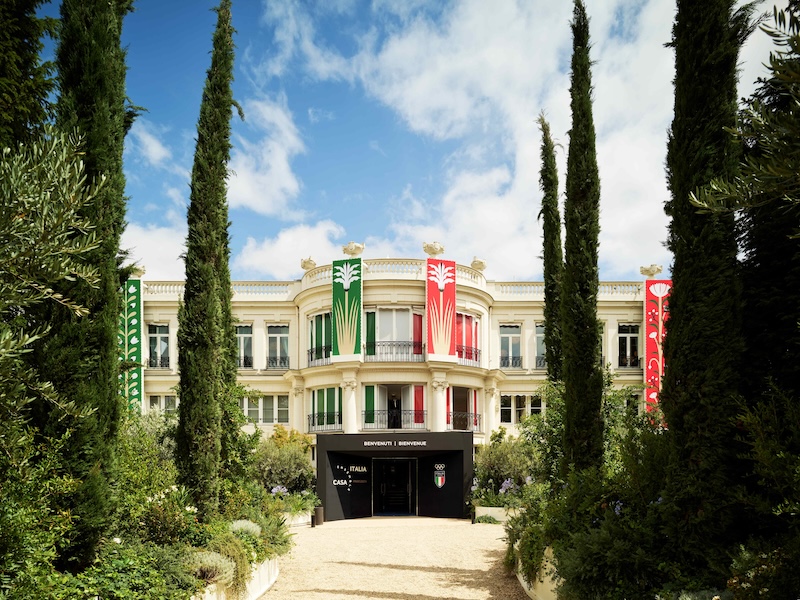Giovanna Castiglioni grew up surrounded by beautiful objects, often designed by her father and uncle, Achille and Pier Giacomo Castiglioni. Together in their studio in Milan, they dreamed up pieces for Alessi, Flos, Interflex, Moroso, Kartell, Knoll, and many more.
Now the head of the Fondazione Castiglioni and living in her childhood home, Giovanna remembers friends coming over and puzzling at the experimental items there. One in particular was a lighting fixture that took a glass bulb and shortened the neck, enlarged the bubble, and made the filament the focus.
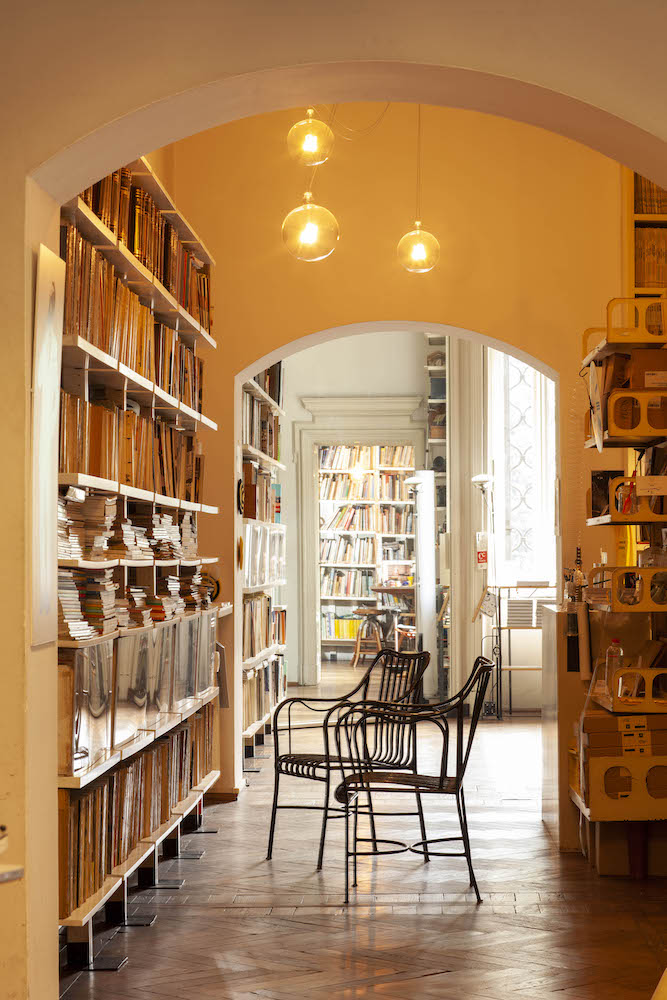 Bulbo57 at Fondazione Castiglioni, photo by Ramak Fazel.
Bulbo57 at Fondazione Castiglioni, photo by Ramak Fazel.
It was created for the XI Milan Triennale in 1957. Completely modern for the time, it also featured new technology, not completely safe for production. “It was an experiment, too dangerous for homes. They were very brave and crazy, especially my father,” said Giovanna. So, after the exhibition, it made its way to the Castiglioni home, where four bulbs cast a glowing, warm light above the dining table. Imagined for a domestic interior, when one bubble was installed with another or more, the light is divided between all evenly.
That ambient, low-intensity hue was a key element to capture when FLOS set out to reissue the Bulbo57, launching this fall in the U.S. “The warm filament is so beautiful, in the original lamp, and also in the new version today,” said Giovanna. Her father was a longtime collaborator of FLOS, creating icons like the Cocoon, Arco, and Snoopy lamps. Since his passing in 2002, the lighting brand has stayed committed to keeping his contributions to design history alive, while jumping at the opportunity to use new technology to bring past prototypes to life.
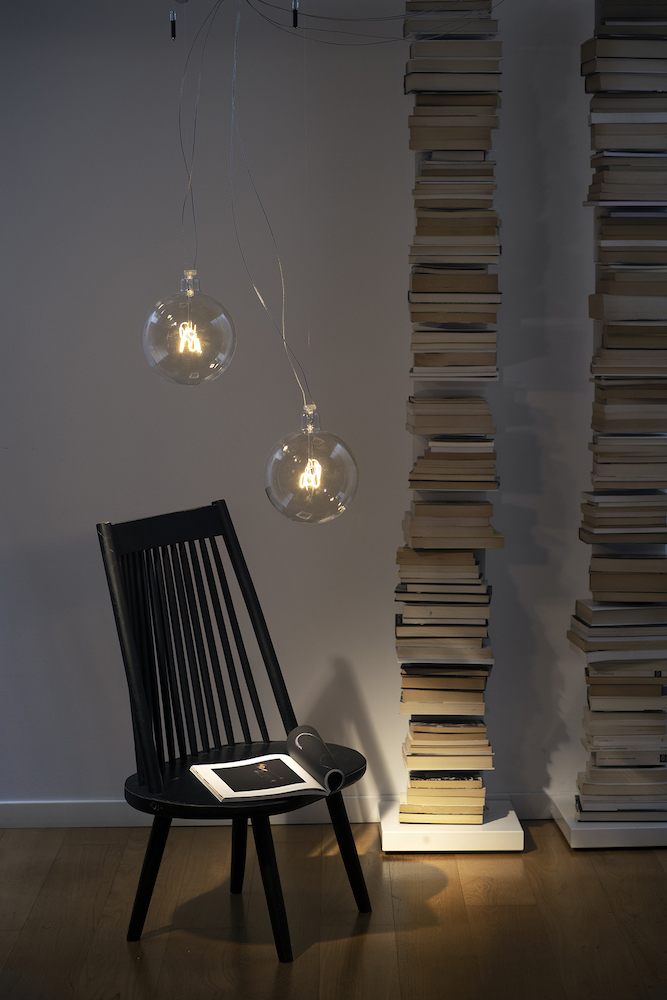 Bulbo57, courtesy of FLOS.
Bulbo57, courtesy of FLOS.
The challenge in making the Bulbo57 is the filament and the large bubble, according to Giovanna. FLOS used a 255-millimeter-long micro-led filament suspended by a molybdenum structure in a blown borosilicate glass bulb, offering equally ideal transparency and shock resistance. Hung from the ceiling directly or with nylon wires, the lamp can float solo or in a cluster. “Anywhere you need a warm light,” as Giovanna suggests.
The Bulbo57 is a shining example of the Castiglioni brother commandments, which said that design means deconstructing. They were driven by observation and the investigation of why something already exists—in shape or concept. They experimented with new objects, projects, spaces, and even music. “He wanted to make sure everything was designed for a good purpose and reason, not just for a nice shape,” said Giovanna. “He preferred to solve a problem.”
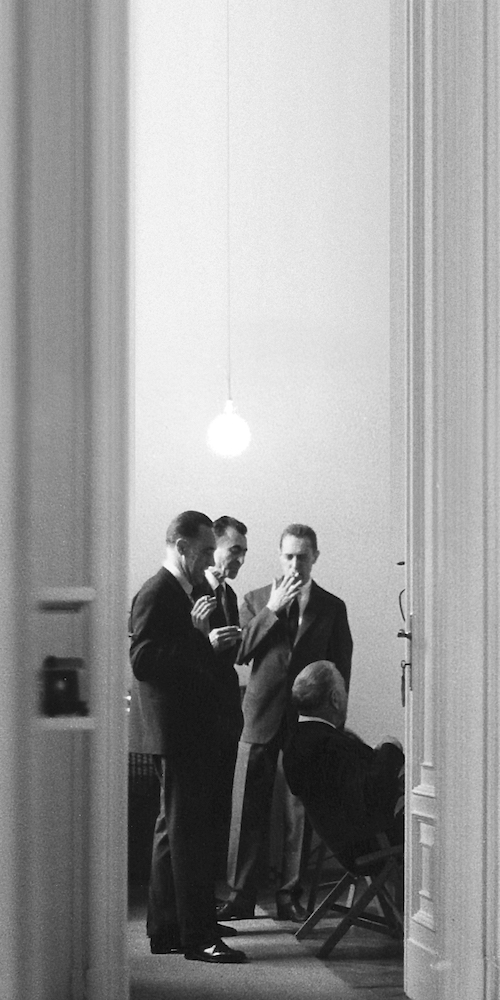 Castiglioni brothers,Dino Gavina, Marcel Breuer, courtesy of FLOS.
Castiglioni brothers,Dino Gavina, Marcel Breuer, courtesy of FLOS.
She sees the lamp as a representation of the two sides of her father; the lighting source as a well-balanced pair. “For me, he was just a father, just a man. Humble, funny, ironic, and very precise. Smiling, playful, and concentrating. A man with two faces,” she said. “This is why I love the Bulbo.”
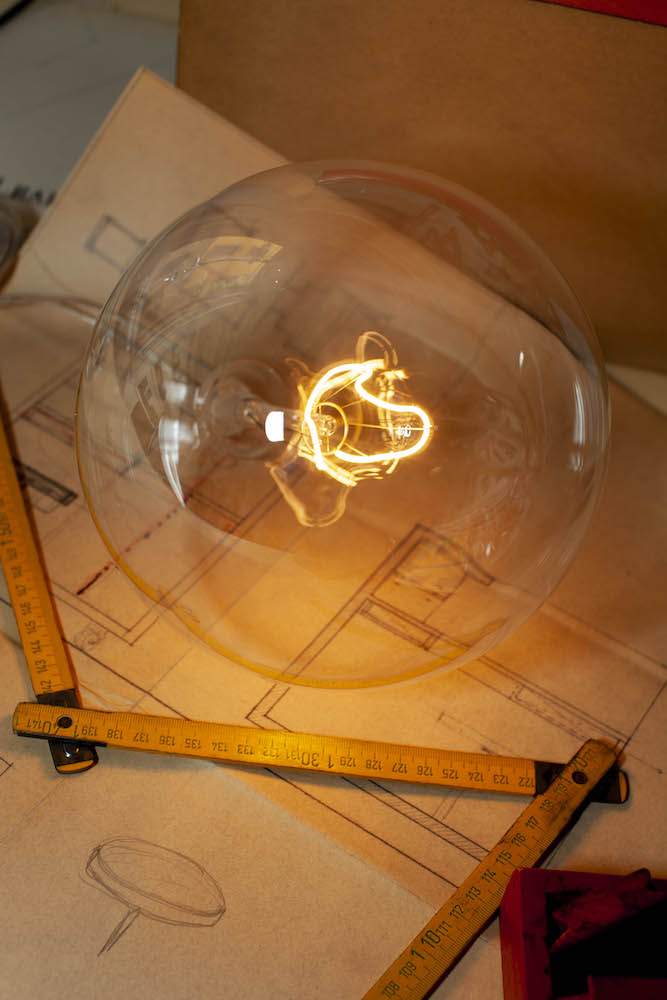 Bulbo57 at Fondazione Castiglioni, photo by Ramak Fazel.
Bulbo57 at Fondazione Castiglioni, photo by Ramak Fazel.






